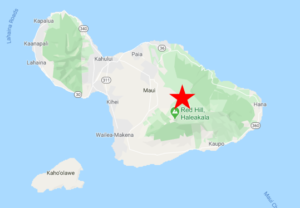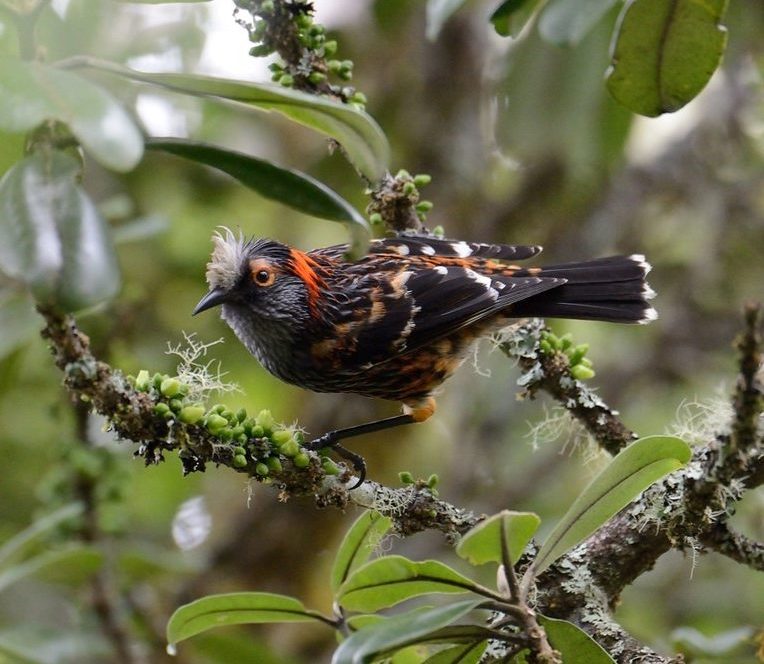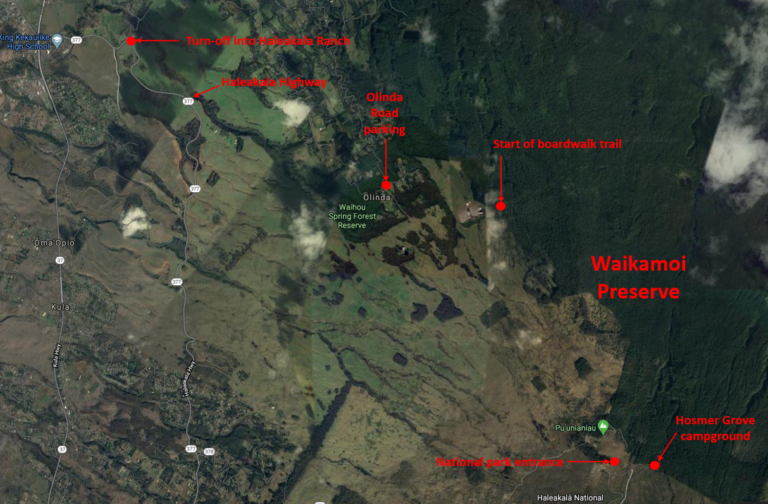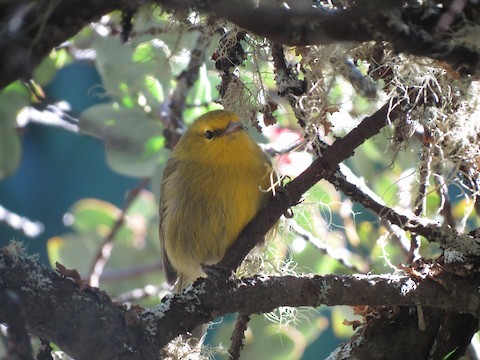Waikamoi Preserve, Maui, Hawaii

The Waikamoi Preserve is the crucial site for anyone who wants to see Maui’s endemic birds. All three remaining endemics occur here and only one, the Maui Alauahio, is likely to be seen at any other publicly accessible site. A second, the Akohekohe, is difficult to find elsewhere but routine at Waikamoi, and the last, the Maui Parrotbill, is impossible elsewhere and becoming scarce at Waikamoi. Three widespread honeycreepers (Apapane, I’iwi, and Common Amakihi) are usually in evidence, along with Japanese Bush-Warbler, Warbling White-eye, Red-billed Leiothrix. A small group of Golden Pheasant has apparently bred in the preserve and might be on its way to becoming an established exotic.
Orientation
Directions
There are two points of entry into Waikamoi: (1) via the Haleakala Ranch and (2) via Hosmer Grove in the national park.
Haleakala Ranch. To reach Waikamoi via the ranch, take the main road toward Haleakala National Park (the Haleakala Highway). Just uphill from Pukalani, the road to the park turns off of Route 37 and onto Route 377. A mile past this turn, watch for an athletic field on the left, then turn sharp-left just past the field.
After 0.3 miles, if you need to visit the main administrative office of Haleakala Ranch, turn left and go 0.2 miles—it will be on the right. To get from the headquarters to the preserve, go back the 0.2 miles, then turn left onto Hanamu Road, heading deeper into the ranch.
In less than a mile Hanamu Road intersects Olinda Road in a T-junction. Turn right and stay on Olinda Road for a few miles until you reach a gate. Park beside the gate and continue on foot.
Hosmer Grove. Some tours of Waikamoi enter via the national park, which is straightforward. There is only one major road into the park. Immediately after entering the park, take the first left turn to the Hosmer Grove Campground.
Birdfinding
The Waikamoi Preserve is an 8,950-acre tract adjacent to the northern border of Haleakala National Park. Its creation is a conservation success story in which The Nature Conservancy (TNC) collaborated with two property owners—the Haleakala Ranch and Alexander & Baldwin—to permanently protect adjacent plots of forested land. The preserve is especially significant because of its elevation, mostly above the tolerance of the mosquitoes that carry avian malaria, which is the survival threshold for the rarest of Maui’s birds, the Maui Parrotbill and Akohekohe.
TNC manages the Waikamoi Preserve and regulates access. Most prospective visitors are limited to monthly hikes guided by TNC staff. These are regularly scheduled for the second Saturday of each month. Space is limited, so it is important to sign up in advance. For additional information about access opportunities and to reserve space on a hike, contact TNC’s Maui office at: hike_waikamoi@tnc.org.

Akohekohe at the Waikamoi Preserve. © Jim Denny

There are many trails through the Waikamoi Preserve, one that is well-established and many that are used primarily for research and vegetation control. The well-established trail is a boardwalk originally constructed for hog hunters before the preserve was created. Its lower end is easily reached from the Haleakala Ranch. It is also possible to reach the upper end from the Hosmer Grove campground, but this requires some minor stream crossings.

Maui Parrotbill is the rarest of Waikamoi’s birds. © Michael Walther

Maui Alauahio remains common at Waikamoi. © James Telford
Notes
Hazards & Hassles
The Waikamoi Preserve is private property, so you must have permission to enter it. In addition to being prohibited, unauthorized entry is unwise. The trail system is confusing, treacherous, steep, and muddy.
Links